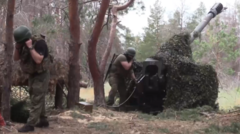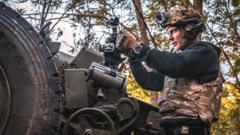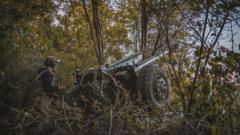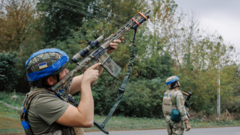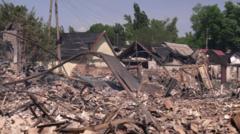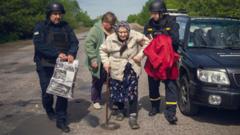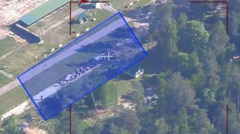Russia’s renewed military campaign in Eastern Ukraine marks a substantial change in tactics, emphasizing rapid movements and unconventional vehicles.
Russia's Offensive in Ukraine: New Tactics and Gains on the Battlefield

Russia's Offensive in Ukraine: New Tactics and Gains on the Battlefield
As Russia's summer offensive progresses, tactical shifts lead to significant territorial gains in eastern Ukraine.
Russia's summer offensive in eastern Ukraine is gaining momentum, bolstered by the implementation of new tactics, which have allowed for rapid territorial advances. Since its initiation in May, Russian forces have captured significant ground, particularly around Kostyantynivka and in the Sumy region, as both sides adapt to the evolving nature of warfare.
Recent reports, including data from DeepState, a Ukrainian organization that analyzes combat footage, indicate that Russian forces seized approximately 173 square miles of territory in May alone, marking a dramatic increase over April's achievements. This marked escalation has shifted the tempo of conflict as both sides have begun to utilize motorcycles and civilian vehicles for rapid maneuvers across the battlefield.
Colonel Viktor Kevliuk, a Ukrainian Army reservist and defense analyst, likened this development to a modern cavalry resurgence, referring to the use of cars and motorcycles instead of traditional horse-mounted units. Ukrainian forces are employing civilian vehicles to reinforce their defensive lines, while Russian troops have been utilizing them to launch surprise assaults and cover ground quickly.
The situation in the Sumy region illustrates these tactical shifts clearly. Over recent months, Russian units have reportedly secured at least a dozen villages in this area, with their approach characterized by small, mobile assault groups that exploit gaps in Ukrainian defenses. Groups consisting of just two or three soldiers are often deployed in waves to press against Ukrainian positions, capitalizing on any marginal successes before reinforcements arrive.
This adaptive strategy has created a complex battlefield dynamic, pushing the conflict in new and unexpected directions as both sides respond to the challenges posed by the other. As the summer offensive continues, observers remain wary of the implications of these changes for the ongoing war in Ukraine and the broader regional stability.





